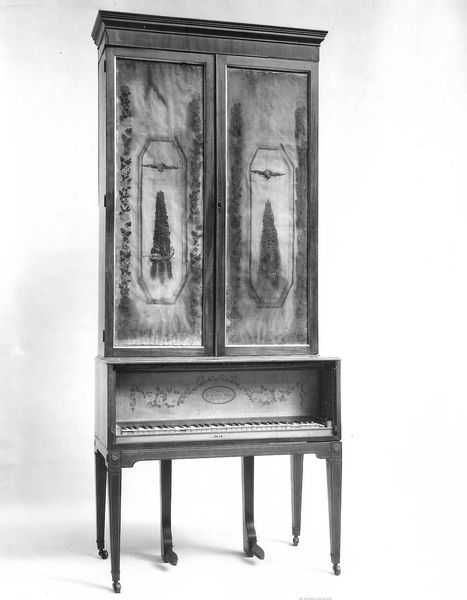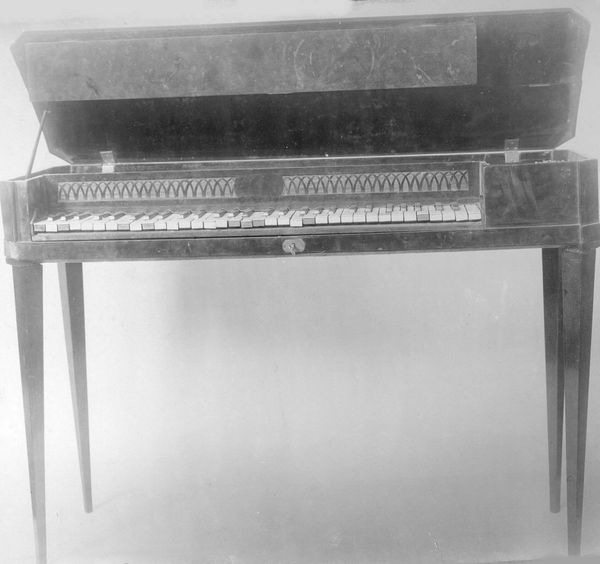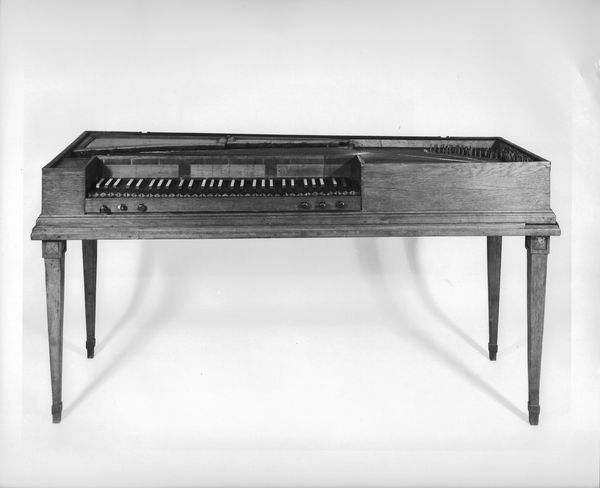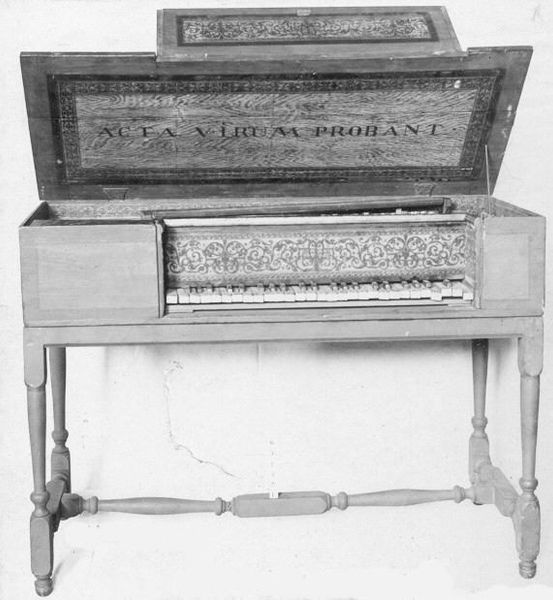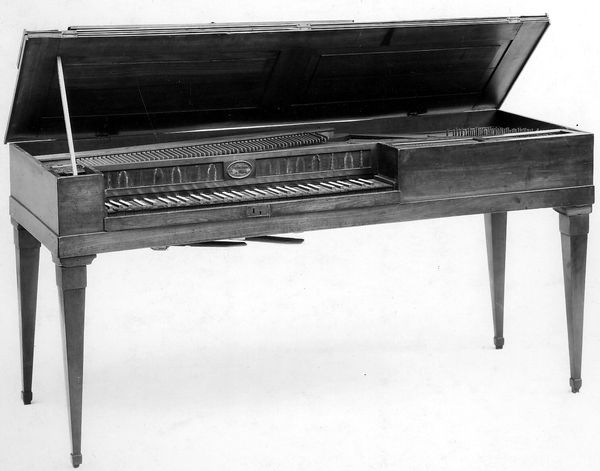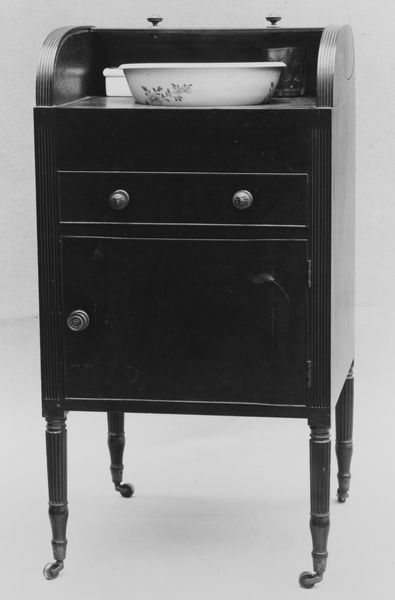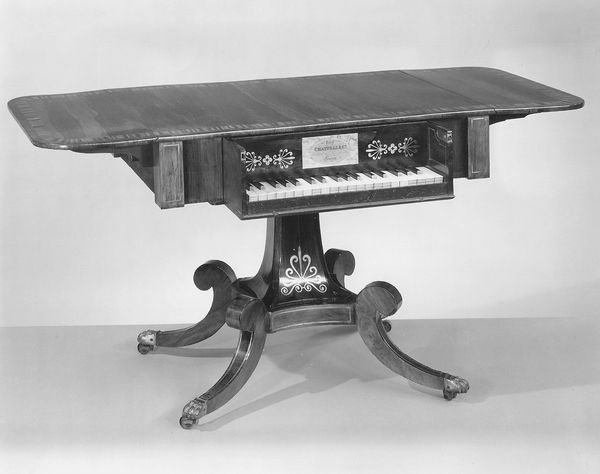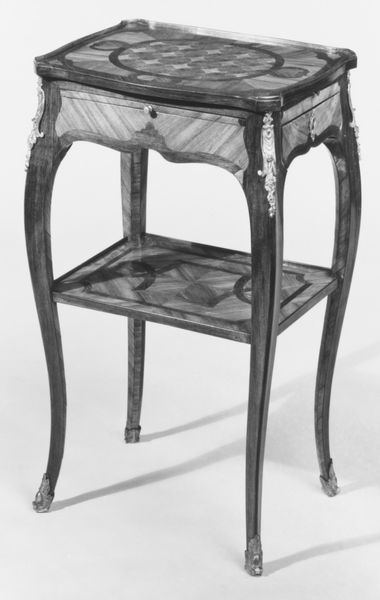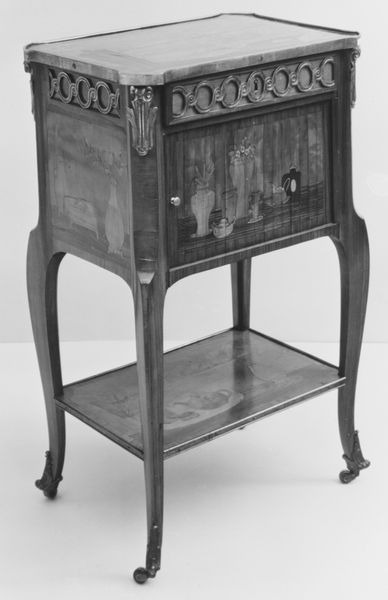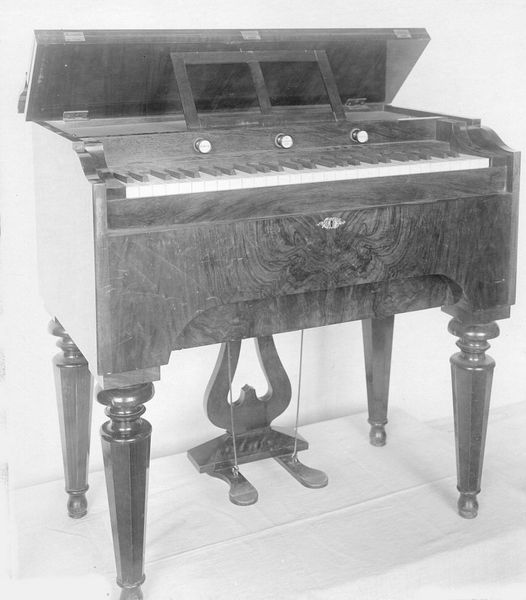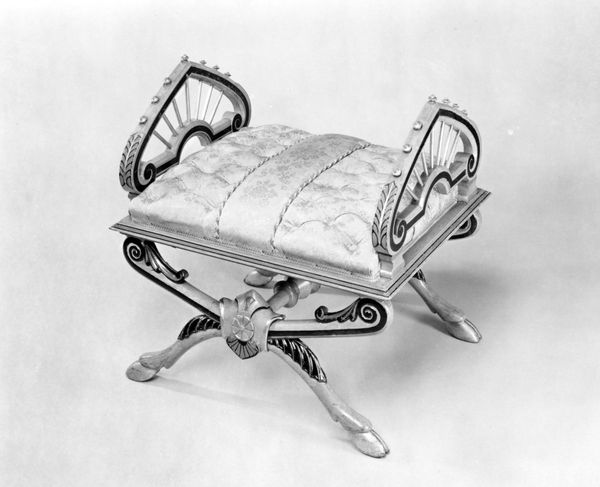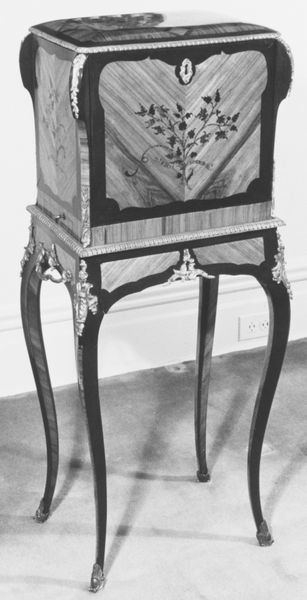
#
3d sculpting
#
3d printed part
#
sculpture
#
3d printing
#
sculptural image
#
black and white theme
#
unrealistic statue
#
3d shape
#
sculpting
#
men
#
united-states
#
musical-instrument
#
statue
Dimensions: Width: 90.5 cm (35-5.8 in.); Diam: 53.3 cm (21 in.); Height: 21.5 cm (8-7/16 in.); case 93.8 cm (36-15/16 in.); total Diam. of glasses: 7.9 -12.6 cm (3-1/8 - 4-15/16 in.)
Copyright: Public Domain
Editor: So, this is the "Grand Harmonicon," created sometime between 1820 and 1840. It’s currently housed here at the Met. Looking at it, it seems such a unique hybrid, combining elements of a scientific instrument with this almost opulent, neoclassical design. What are your initial thoughts on this work? Curator: It is a striking object! For me, its importance lies in unpacking the labor and social dynamics inherent in its construction and use. Think about the various trades involved – glassblowing, woodworking, even the mining of any metals used. And consider who would have had access to such a lavish, complex instrument. Editor: That's a great point. I hadn't considered the social aspect so directly, but the crafting would have been really intense. Did only wealthy people commission things like this? Curator: Wealth certainly played a role. However, beyond pure wealth, it speaks to a specific kind of educated elite interested in scientific pursuits, art, and music. It shows how cultural status in that era depended on demonstrating one's command of varied spheres of intellectual and manual work. Editor: Right! It makes you wonder who built the instrument versus who played it and for what purposes. Curator: Exactly! And what does its ultimate display in a museum like the Met do to those original purposes? Does it further legitimize elite social structures by showcasing this almost fetishized object, or does it reveal the complex relations of production behind a seemingly simple piece of history? Editor: Hmm, food for thought, considering the ongoing conversations around labor practices in cultural institutions themselves! It has a knock-on effect even today. Curator: Precisely. By centering materiality, the means of production, and social consumption, we can move beyond simply admiring aesthetics to critically engaging with this object’s deeper history.
Comments
No comments
Be the first to comment and join the conversation on the ultimate creative platform.
